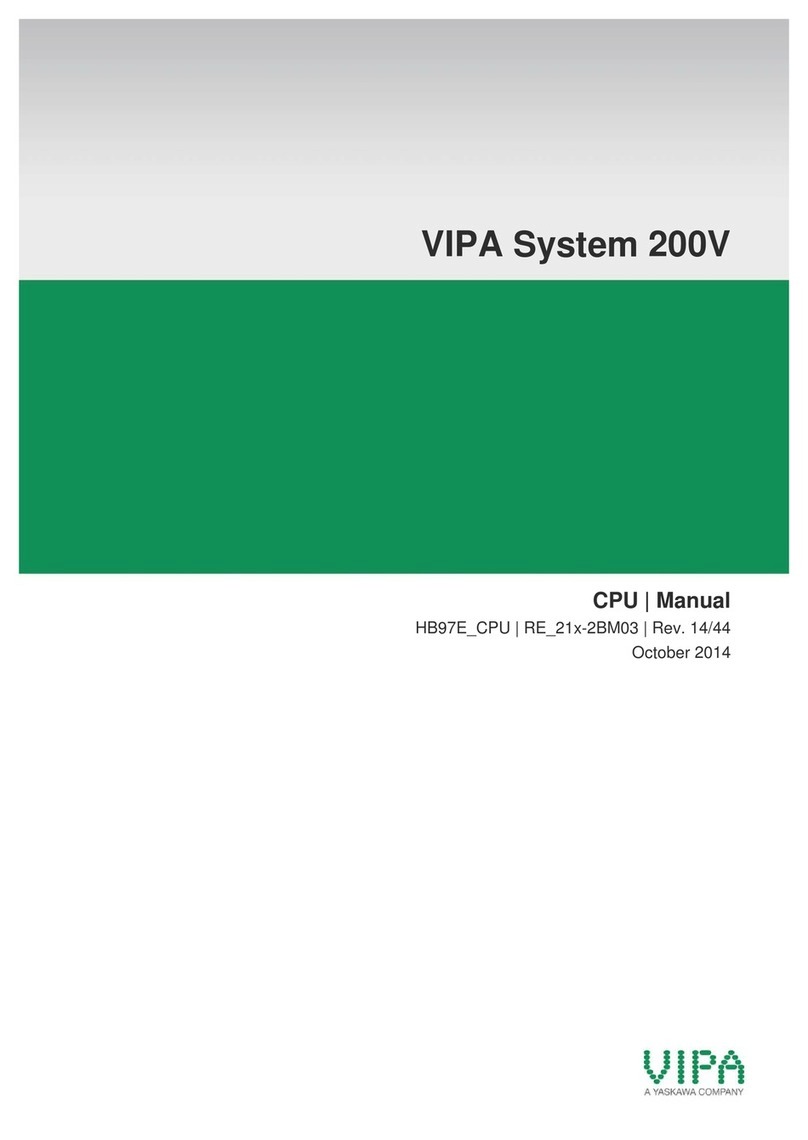
Manual VIPA System 200V Contents
HB97E - PC - Rev. 06/29 i
Contents
User considerations ................................................................................. 1
Safety information.................................................................................... 2
Chapter 1 Basics .............................................................................. 1-1
Safety information for Users................................................................. 1-2
Overview .............................................................................................. 1-3
Components......................................................................................... 1-4
General description System 200V ........................................................ 1-5
Chapter 2 Assembly and installation guidelines............................ 2-1
Overview .............................................................................................. 2-2
Assembly.............................................................................................. 2-5
Wiring................................................................................................... 2-8
Assembly dimensions......................................................................... 2-10
Installation guidelines ......................................................................... 2-12
Chapter 3 PC 288 - CPU ................................................................... 3-1
System overview .................................................................................. 3-2
Basics .................................................................................................. 3-3
Properties............................................................................................. 3-4
PC 288 - CPU - Structure..................................................................... 3-4
Components......................................................................................... 3-5
Storage media applications .................................................................. 3-9
Deployment in the System 200V ........................................................ 3-10
Using the BIOS setup......................................................................... 3-13
Register description............................................................................ 3-21
Technical data.................................................................................... 3-23
Appendix ................................................................................................A-1
Index ....................................................................................................A-1































